Green tea and matcha hold a significant place in Japanese culture and have garnered worldwide popularity for their refreshing taste and numerous health benefits. As these flavors have become increasingly sought after, global food chains like McDonald’s have adapted their menus to cater to local tastes and introduce innovative offerings inspired by the versatile green tea and matcha. To understand and appreciate the success of the Green Tea McFlurry in Japan, it is crucial to delve into the rich history of these flavors, consider their modern applications in various recipes and desserts, and recognize their role in shaping McDonald’s marketing strategies and ice cream production techniques.
History of Matcha and Green Tea in Japan
The origins of green tea and matcha in Japan can be traced back to the 9th century when Buddhist monks studying in China brought tea seeds back to their homeland. Initially, it was a luxury item consumed mainly by the imperial court and the nobility. It was during the Kamakura period (1185–1333), under the influence of Zen Buddhism, that tea began to spread among the samurai class and the common people. The soothing and meditative properties of tea were highly valued by the samurai, promoting focus and tranquility in the midst of the tumultuous political climate.
Matcha, or powdered green tea, holds a distinctive position in Japanese tea culture, as it is the primary tea used in Japanese tea ceremonies. The traditional method of preparing matcha involves grinding tea leaves into a fine powder, which is then whisked into hot water to create a frothy, bright green beverage. The tea ceremony itself is an intricate and meditative process that emphasizes the artistry, aesthetics, and spiritual aspects of tea preparation and consumption. Through these ceremonies, people learn to appreciate the subtle flavors and textures of tea while embracing the principles of harmony, respect, purity, and tranquility.
In Japan, green tea is enjoyed in several different forms, each with unique characteristics and flavor profiles. Sencha, the most popular type of green tea, is made by steaming and rolling the tea leaves before drying them. Gyokuro is a rare, high-quality tea, shaded in the last few weeks before harvesting to enhance its sweet and umami-rich flavor. And as previously mentioned, matcha is made by grinding shade-grown tea leaves, which produces a vibrant green powder packed with flavor and health benefits.
The various grades of tea impact Japanese tea culture in several ways. The highest quality teas are often reserved for use in religious ceremonies and special occasions, while more affordable teas are consumed daily by the general public. Different teas also require specific brewing techniques and can be paired with different types of cuisine, contributing to the richness and diversity of Japanese culinary culture.
The influence of matcha has even extended to the fast-food industry in Japan, as evident in unique offerings like McDonald’s Green Tea McFlurry. Combining the sweet, creamy taste of vanilla soft serve with the earthy, slightly bitter notes of matcha, this dessert offers a contemporary twist on a classic Japanese flavor. The Green Tea McFlurry highlights the versatility and adaptability of matcha and green tea in Japanese society, as they continue to evolve and find their way into new and innovative culinary creations.
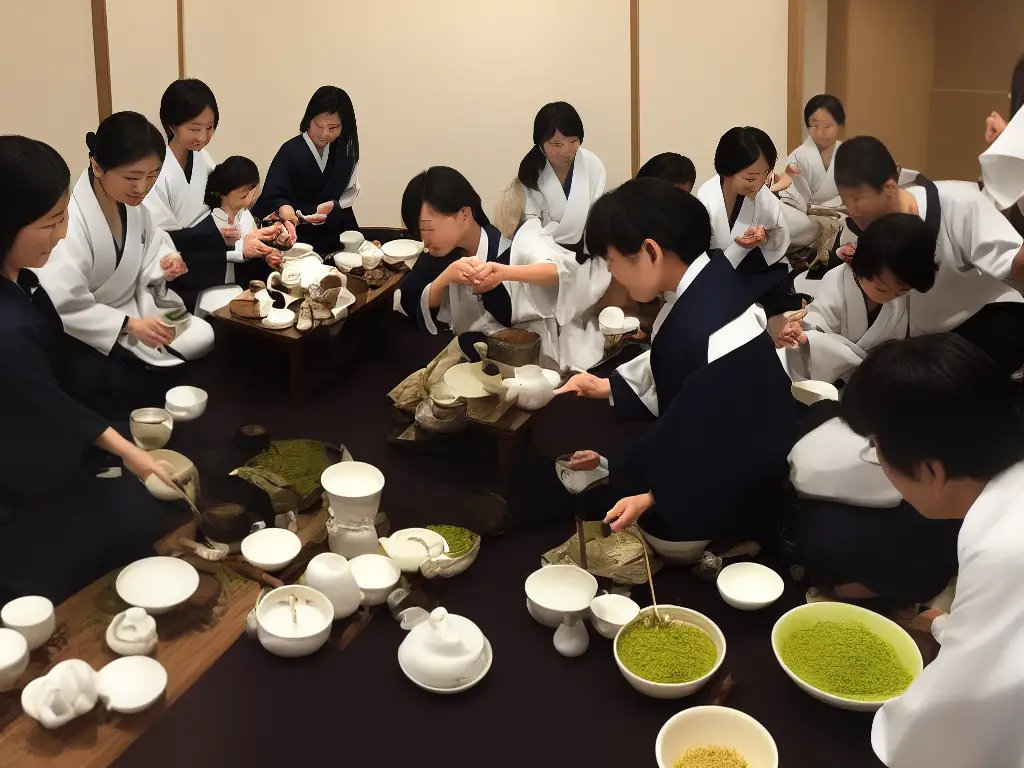
The Matcha McFlurry in the McDonald’s Japan Menu
In 2007, the fast-food giant McDonald’s decided to dip its toe into the Japanese market in a way that was both innovative and culturally respectful. They took one of their most beloved desserts, the McFlurry, and gave it an Eastern twist, thus introducing the Matcha McFlurry to their Japanese patrons. It initially debuted as a seasonal treat, designed to pay homage to the traditional flavours deeply rooted in Japanese culture. The decision to create a fusion of a recognisable fast-food dessert and a centuries-old traditional ingredient was bold, daring, and entirely transformative for the dessert landscape in Japan.
The addition of matcha, a finely ground powder made from select green tea leaves, was the game-changing component of this dessert. Known for being rich in antioxidants, matcha is a classic ingredient in Japanese culinary tradition and is celebrated as a healthier alternative to many popular Western flavours. The presence of matcha elevated the dessert from a simple vanilla ice cream with toppings to a rich tapestry of flavours that was both familiar and exotic. McDonald’s masterstroke lay in maintaining the integrity of the traditional McFlurry, whilst introducing the undeniable presence of the green tea powder, a balancing act that ensured that both sets of flavours were noticeable yet harmonious.
The release of the Matcha McFlurry sent shockwaves through the fast-food industry in Japan. To everyone's surprise, this innovative combination took off immediately and went viral amongst the locals and tourists alike. Amidst the ensuing buzz, McDonald’s Japan had not just successfully integrated into the Japanese dessert culture, but also set off a matcha dessert trend that soon spread like wildfire. It was a clear testament to the clever blending of Eastern and Western flavours, fulfilling the locals' craving for a taste of the familiar, while introducing something new and exciting. And so, the Matcha McFlurry solidified its place as a permanent fixture on the McDonald's menu, embodying the significance of matcha within Japanese culinary culture and paving the way for future gastronomic fusions.
As years have rolled by, the Matcha McFlurry, McDonald's Japan's signature dessert, has experienced numerous evolutions and variations that have stirred excitement among customers. Undoubtedly, the Matcha McFlurry exemplifies McDonald’s Japan's commitment to bring distinctive and imaginative menu options to its customers. It's a delightful blend of creamy signature soft-serve, swirled with traditional Matcha green tea - a unique treat that brings a refreshing balance between a sweet delight and an earthy, piquant Asian flavour.
In an unforeseen twist of creativity in 2016, a nouveau blend named the “Matcha McFlurry with Oreo” was unveiled, marrying the matcha-flavored ice cream alongside crumbled Oreo cookies. As a fusion between East and West, this iteration was a creamy blend of matcha's bittersweet tones, and Oreo's classic crunchy and sweet delight. This synergistic mixture was received with fervor, further propelling the popularity of the dessert among both Japanese locals and tourists alike. Indeed, this ingenious blend became a testament to McDonald's Japan's ability to cater to varied palates and preferences.
The tale of the Matcha McFlurry doesn’t end there. Its ongoing evolution promises an intriguing array of newer versions, with the dessert being tweaked to incorporate regional and seasonal ingredients. From the earthy richness of chestnuts to the delicate allure of the sakura-flavored mochi, the Matcha McFlurry leads the vanguard of delightful innovation. Jet-setting further into uncharted culinary territories, McDonald's Japan has also spruced up their creation via exciting collaborations with popular Japanese confectionery brands. With each new version, the Matcha McFlurry continues to reaffirm McDonald’s Japan's commitment to novelty, all the while maintaining its original, signature charm.
Let me take you on a culinary journey to the heart of Japan, without leaving your local McDonald's. Have you ever tried a Green Tea McFlurry? If not, you are truly missing out. This exotic delight is not your average McFlurry; it stands as something extraordinarily unique. What sets it apart, you ask? The answer lies in its composition, the careful blending of complementary ingredients. It's a cool, creamy feast of McDonald's signature soft serve ice cream, luxuriously infused with an intriguing flavour modifier, the matcha green tea powder. This isn't just an ice cream; it's a testament to the complexity of flavours Japan has introduced to the world.
Where does this matcha come from? To produce a dessert of such exquisite taste, McDonald’s Japan harnesses the finest matcha green tea powder from Uji, Kyoto. This isn't just any matcha; Uji, Kyoto is world-renowned for producing matcha of the highest quality, revered for its unique characteristics. The bright, earthy, slightly bitter taste of this matcha is artfully balanced with the sweetness of the ice cream. The result is a niche flavour, one that embodies the richness and the delicate bitterness, culminating in a truly sensory experience.
Just when you thought that it couldn't get any better, let me introduce you to the final, critical component: the optional additional toppings. Think of tantalising Oreo pieces or delicate mochi bits, seamlessly blending in with the matcha infused ice-cream, intensifying the flavour, enhancing the texture. These toppings aren't mere accessories; they are the finishing touches that bring texture and contrast to the dessert. These editable pieces of art culminate in an extraordinarily satisfying taste, a one-of-a-kind experience that will surely leave you wanting more. Next time you're at a McDonald's in Japan, remember to head straight for the Green Tea McFlurry. Trust me, your taste buds will thank you.
In terms of nutritional information, the Matcha McFlurry is generally higher in sugar and calories compared to other menu items at McDonald’s Japan, due to the combination of ice cream and sweet toppings. While the matcha green tea powder contains beneficial antioxidants, it is important to enjoy this dessert in moderation. Despite being a calorie-dense indulgence, the Matcha McFlurry remains popular among consumers for its distinct flavor and fun, innovative adaptations.
The popularity of the Green Tea McFlurry in Japan reflects the nation’s deep-rooted tea culture and the global trend of incorporating matcha into different types of food and beverages. As matcha has been gaining worldwide recognition for its health benefits and versatility, McDonald’s Japan has been successful in creating a fusion dessert that both pays homage to Japanese culinary traditions and maintains the brand’s fun and exciting image. This winning combination has made the Matcha McFlurry a must-try treat for matcha enthusiasts and those visiting McDonald’s Japan alike.
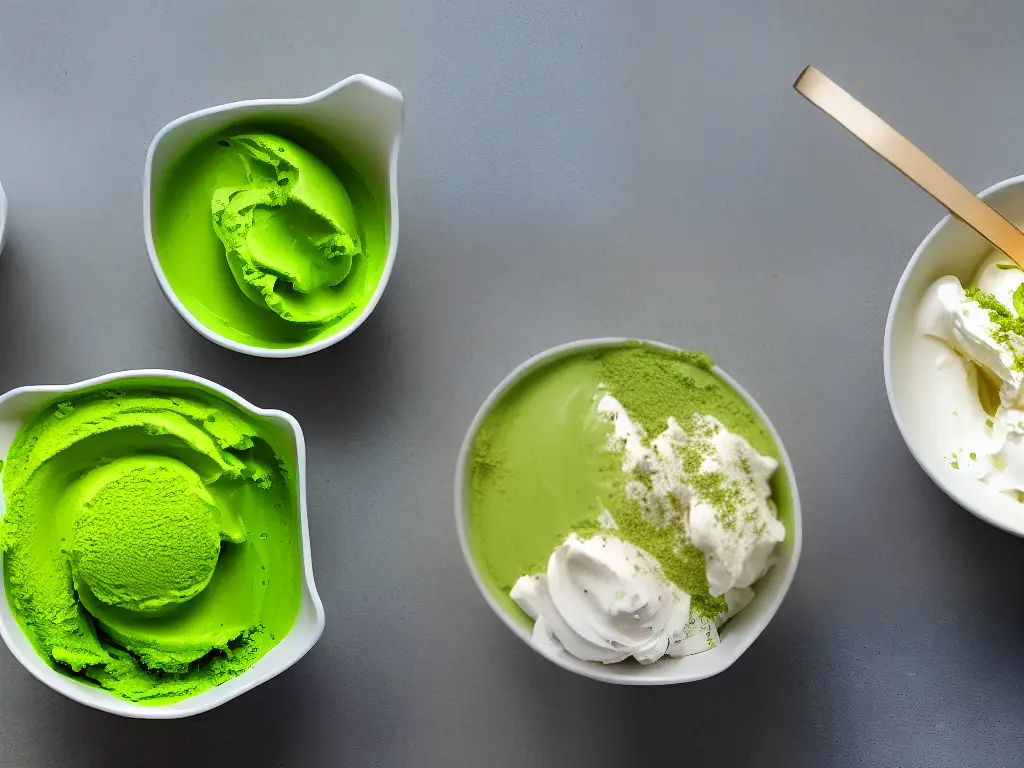
McDonald’s marketing strategies in Japan
McDonald's in Japan has fashioned an outstanding success story with its Green Tea McFlurry. The adroit fusion of the renowned McFlurry dessert and the popular Japanese green tea powder, matcha, demonstrates McDonald's commitment to embracing local flavours and ingredients. This strategy not only charmed Japanese tastebuds, but concurrently managed to uphold McDonald's global brand identity.
In Japan, McDonald's tactfully engages the local penchant for seasonal flavours and food trends by periodically launching exclusive items like the Green Tea McFlurry. This clever marketing approach, capitalising on the Japanese consumers' keen interest in new tastes, propels regular footfall. The limited-time delicacies keep customers intrigued and coming back for more.
In an expert move to boost customer appeal, McDonald's in Japan has harnessed joint ventures as key marketing tactics. Fuse this with introducing unique menu delicacies, like their partnership with Morinaga Milk Industry to forge the exotic Green Tea McFlurry, comprising matcha cookies, azuki beans, and chocolate-laden rice puffs, it's evident this strategy has increased consumer interest and driven sales.
Embracing rapid technological advancements, McDonald's Japan employs digital platforms like social media, mobile apps, and their website to heighten the appeal of their menu offerings, such as the popular Green Tea McFlurry. This innovative marketing approach not only appeals visually but also widens their reach to a vast, tech-savvy audience, enhancing the excitement around their products.
A classic soft-serve ice cream indulgence with a Japanese twist, McDonald's Japan's Green Tea McFlurry ingeniously fuses subtle green tea notes with creamy ice cream, hinting towards a slightly bitter undertone lent by matcha powder and accompanying crushed cookies. A unique and charming treat to cherish.
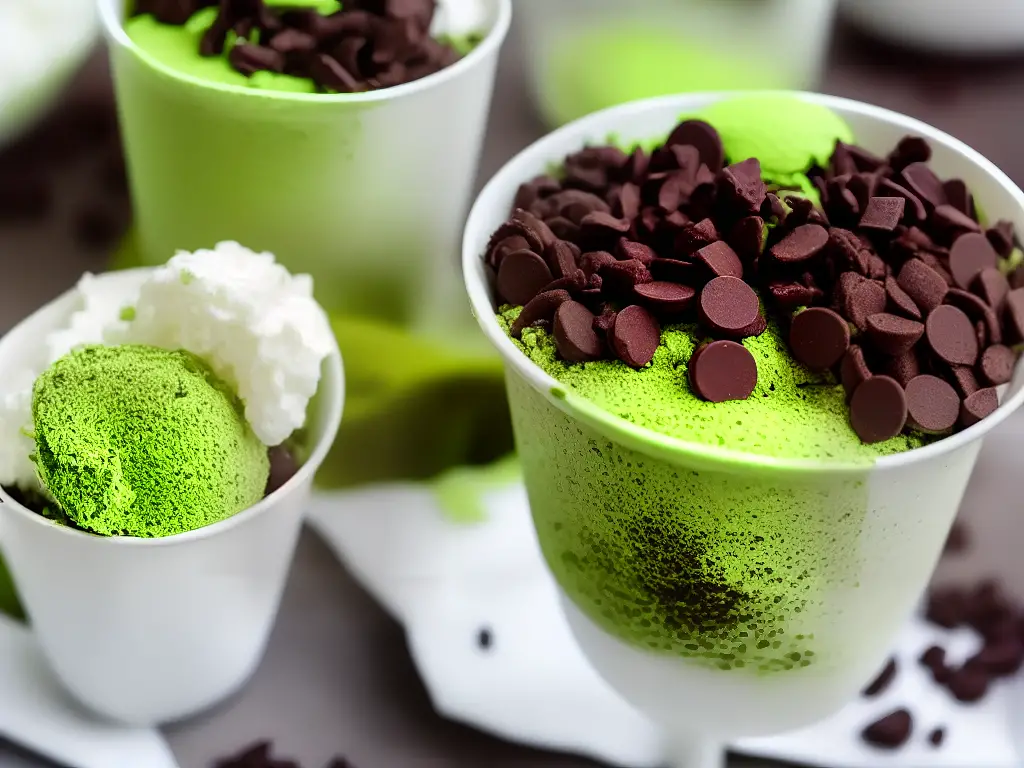
Green Tea and Matcha-based recipes
Moreover, the presentation of the Green Tea McFlurry and other menu items in Japan is a vital component of McDonald’s marketing strategy. McDonald’s Japan emphasizes the aesthetic appeal of its food when promoting its products, which is particularly important due to the significance of presentation in Japanese culture. For instance, the Green Tea McFlurry is presented artfully with its vibrant green color and toppings arranged in an appealing manner. This attention to detail is crucial to creating a positive customer experience, translating into increased sales and brand loyalty among Japanese consumers.
Matcha-based recipes often showcase the versatility of this traditional Japanese ingredient; it can be incorporated into a variety of sweets and baked goods. For example, matcha can be blended into cake batters, cookie dough, or even swirled into homemade ice cream and popsicles. The mild, earthy flavor of matcha pairs well with other flavors, such as red bean paste or sweet white chocolate. Incorporating these flavors into a Green Tea McFlurry could elevate the dessert even further, offering tantalizing new textures and tastes.
One popular combination for a matcha-based dessert is red bean paste, originating in Japan as a major ingredient in traditional wagashi (Japanese confections). The combination of the earthy green tea flavor with the sweet and slightly nutty taste of red bean paste has become a popular choice for various desserts, such as cakes and pastries. In the case of a Green Tea McFlurry, adding sweet red bean paste could provide added depth and richness while maintaining the delicate balance of green tea flavor.
White chocolate is another popular pairing with green tea and matcha-flavored desserts. The creamy sweetness of white chocolate complements the slightly bitter and vegetal notes of matcha, creating a harmonious blend of flavors. Adding bits of white chocolate to a Green Tea McFlurry would introduce a delightful creaminess and a satisfying crunch from the hardened chocolate, further enhancing the overall appeal of the dessert.
Merging the delectable flavors of green tea and matcha with other fruity ingredients, such as yuzu or sakura (cherry blossom), can create refreshing and seasonal desserts with a distinctive Japanese flair. For instance, a Green Tea McFlurry could be enhanced with a burst of citrusy yuzu sauce or delicate sakura-flavored whipped cream. Experimenting with green tea and matcha flavor pairings in this way may lead to innovative variations of classic desserts, such as McDonald’s Green Tea McFlurry.
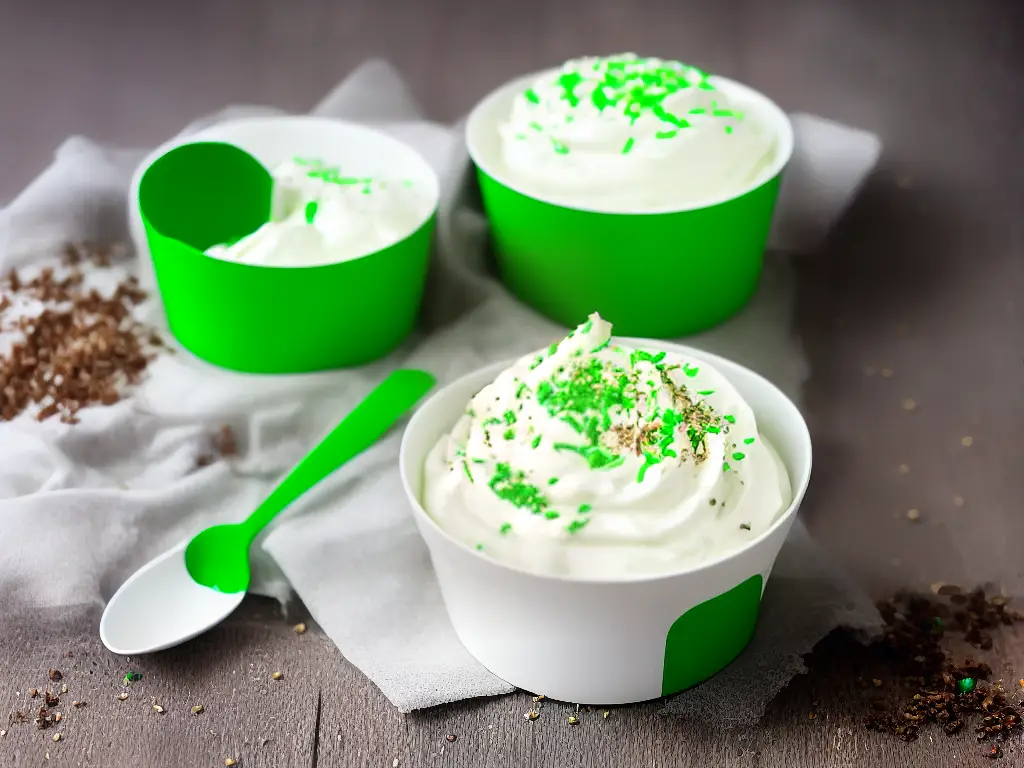
Ice Cream and Frozen Dessert Production
As an enthusiast looking to master the art of making a Japan McDonald’s Green Tea McFlurry, it’s essential to comprehend the fundamental principles of ice cream and frozen dessert production. This includes familiarizing yourself with the various techniques, machinery, and ingredients involved in crafting these scrumptious treats. The core components of ice cream are milk, cream, sugar, and flavorings. The specific flavor for the Green Tea McFlurry comes from green tea powder, which can be combined with other pairings to create a delicious and unique dessert experience.
One essential technique for making high-quality ice cream or McFlurry is the churning process, which incorporates air into the mixture, thereby increasing its volume and creating a smooth, creamy texture. Continuous churning also helps to break up ice crystals that form during the freezing process, making the end product less icy and more velvety. For the Green Tea McFlurry, the key is to achieve the perfect balance between allowing the ice cream base to churn long enough for a fluffy, creamy texture while incorporating the green tea powder to impart its distinct flavor.
In addition to churning, the ingredient ratios in the ice cream base play a crucial role in determining its consistency and taste. For instance, the amount of sugar in the base impacts the freezing point; more sugar leads to a softer ice cream. Moreover, the use of stabilizers and emulsifiers is often necessary to prevent the separation of the different elements in the mixture, ensuring an even distribution of flavors and a homogenous, silky texture. Experimenting with different proportions of green tea powder, sugar, and milk can help you create the ideal Green Tea McFlurry that embodies the unique fusion of flavors and textures found in Japan’s McDonald’s version.
Another aspect to consider in frozen dessert production is the freezing method itself, which has a direct impact on the final product’s texture. For instance, using liquid nitrogen to freeze the ice cream base can result in a smoother texture, as it freezes the mixture almost instantly and produces very small ice crystals. On the other hand, traditional home freezers may require more frequent churning or blending in order to prevent ice crystals from growing too large. In the case of the Green Tea McFlurry, mastering the most effective freezing technique is crucial for achieving the desired creamy consistency that mimics the restaurant version.
Furthermore, incorporating the additional ingredients that make the Green Tea McFlurry special, such as pieces of crushed Oreos or other mix-ins, also plays a significant role in the dessert’s overall sensory experience. These ingredients not only add flavor and texture but are also visually appealing, making the dessert enjoyable for the eater. Finding the right balance between the green tea ice cream base and the mix-ins’ quantity, size, and distribution is another important aspect in recreating the Japan McDonald’s Green Tea McFlurry.

Food Science and Artificial Flavorings
Understanding the role of food science in the development of products like the Green Tea McFlurry is essential, as it helps perfect the flavor, texture, and appearance of the dessert. One of the crucial components in achieving the desired green tea flavor is the use of both synthetic and natural green tea extracts derived from Camellia sinensis leaves. These leaves contain a class of compounds called catechins, responsible for green tea’s characteristic flavor and aroma. By learning how to isolate and concentrate these compounds into extracts, food scientists can incorporate them into food products effectively, ensuring the optimal balance between the green tea ice cream base and the additional mix-ins in the Japan McDonald’s Green Tea McFlurry.
While natural green tea extract provides the authentic flavor and aroma of green tea, synthetic flavorings may also be used to enhance or modify the taste profile. Artificial flavorings are created through a process called flavor chemistry, where specific flavor molecules are combined to mimic the taste and aroma of a desired ingredient. In the case of the Green Tea McFlurry, these artificial flavorings may be added to intensify the green tea taste or add complementary flavors. It is important that the food scientists balance the use of natural and synthetic flavorings to create a well-rounded and pleasant taste.
In addition to the flavor components, food scientists also work on the texture and appearance of the Green Tea McFlurry. The use of emulsifiers and stabilizers in the ice cream base helps to ensure a consistent and smooth texture. For example, the use of emulsifiers like mono- and diglycerides can help to prevent the separation of fat and water in the product, while stabilizers like carrageenan or xanthan gum can help maintain the overall structure of the dessert. Both natural and synthetic green tea extracts can also affect the texture and mouthfeel of the McFlurry, as they can provide a slight astringency or creaminess, depending on their concentration.
When it comes to the appearance of the Green Tea McFlurry, color is another important factor to consider. The use of natural green tea extract provides a pale green color that is reminiscent of fresh green tea leaves, although sometimes additional colorants may be used to enhance the visual appeal of the dessert. For instance, natural colorants like chlorophyll or synthetic colorants like Green No. 3 or Green No. 4 may be used to achieve an eye-catching shade of green. The use of natural colorants may be more desirable, as they usually have a lower risk of causing adverse reactions and may better appeal to consumers who prefer ‘clean label’ or minimally processed products.
Food scientists continue to experiment with and refine the combination of natural and synthetic green tea extracts, as well as texture and appearance modifiers, in the process of developing the Japan McDonald’s Green Tea McFlurry. Understanding the intricate chemistry behind food flavorings, colors, and texturizers allows them to create a dessert that not only tastes and looks appealing, but also evokes the authentic essence of green tea. As new techniques and ingredients become available, it is exciting to see how the art and science of food flavorings will continue to evolve and impact the development of delicious and innovative food products like the Green Tea McFlurry.
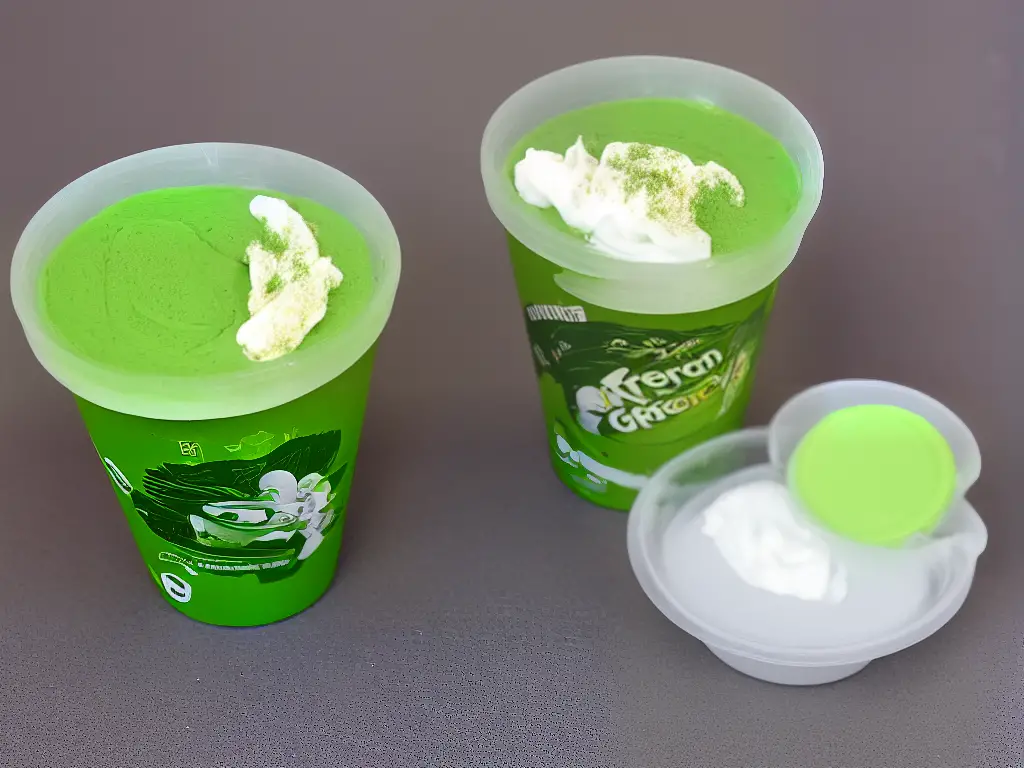
Green Tea Treats Around the World
Introduced by McDonald's, the delectable Green Tea McFlurry has delighted enthusiasts in Japan. Masterfully concocted with the brand's luscious soft-serve ice cream, an enticing blend of green tea syrup, and finally adorned with crushed matcha Oreos, it's the perfect confluence of tradition and indulgence - a seasonal treat expertly crafted to exquisite perfection by seasoned food scientists.
Since its debut in Japan in 2004, the innovative KitKat Green Tea has captured the fascination of connoisseurs worldwide. Offering a delightful blend of crisp wafer enveloped in a green tea and matcha-infused cream, this much sought-after treat now enjoys its status as a popular tourist souvenir and has inspired a global range of matcha-flavoured KitKat products.
In nations beyond Japan, green tea and matcha have edged into different culinary areas, epitomised by Australia's Pana Chocolate's matcha and mint raw chocolate bar. Utilising organic, vegan ingredients, this tasty, guilt-free treat showcases the rising international interest in green tea and matcha flavours in snacks and desserts alike.
Delighting in the fusion of Japanese and Hong Kong culinary flair, Via Tokyo, a renowned matcha-based dessert chain in Hong Kong, offers an innovative spectrum of green tea delights like sundaes, parfaits, and waffles, mirroring the coalescence of two gastronomic cultures and underscoring the versatility of green tea.
Captivating enthusiasts worldwide, the succulent matcha and green tea dimensions are now being explored in beverages and classic desserts. A remarkable showcase is California's Soft Swerve, an ice cream parlour that ingeniously blends matcha green tea essence into ice cream, accentuated with a smattering of red bean or chocolate chips, all encased in a delightful chocolate-dipped waffle cone - a testament to the escalating popularity of these refreshing flavours and their innovative integration into various cuisines.

By delving into the multifaceted world of green tea and matcha, we can expand our understanding and appreciation for their influence on contemporary dessert culture and global food industry trends. With thorough research on the history, production methods, marketing strategies, and various recipes, it becomes apparent how the Green Tea McFlurry succeeded in attracting the taste buds of both Japanese consumers and global food enthusiasts. As the world continues to embrace innovative culinary experiences and new flavor combinations, green tea and matcha will undoubtedly maintain their prominence in sweets and dishes worldwide, securing their role as timeless and beloved ingredients in countless treats and culinary creations.
